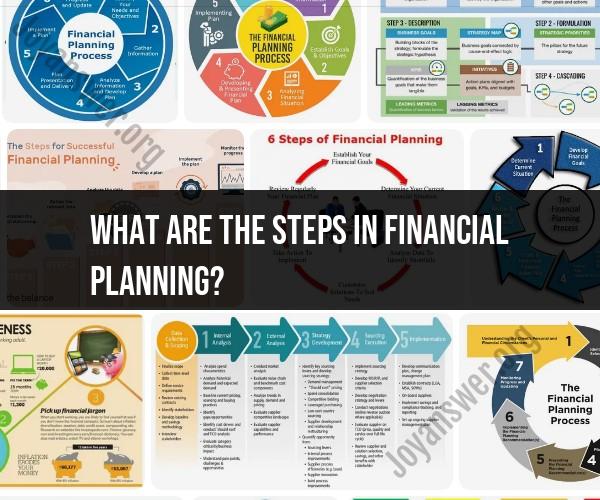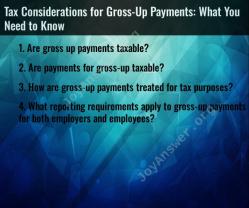What are the steps in financial planning?
Financial planning is a comprehensive process that involves setting financial goals, assessing your current financial situation, and developing strategies to achieve those goals. Here are the steps in financial planning:
1. Establish Clear Financial Goals:
- Determine your short-term and long-term financial objectives. These could include saving for retirement, buying a home, paying off debt, or funding a child's education.
2. Assess Your Current Financial Situation:
- Gather information about your current financial status. This includes your income, expenses, assets, liabilities, and any existing investments or savings.
3. Create a Budget:
- Develop a detailed budget that outlines your monthly income and expenses. This will help you understand where your money is going and identify areas where you can save.
4. Build an Emergency Fund:
- Establish an emergency fund with at least three to six months' worth of living expenses. This fund provides a financial safety net in case of unexpected events, such as medical emergencies or job loss.
5. Pay Off High-Interest Debt:
- Prioritize paying off high-interest debt, such as credit card balances. Reducing debt can free up more money for savings and investments.
6. Save and Invest Regularly:
- Allocate a portion of your income to savings and investments. Consider automating your savings contributions to ensure consistency.
7. Diversify Investments:
- Diversification involves spreading your investments across different asset classes, such as stocks, bonds, and real estate. It helps manage risk and maximize returns.
8. Retirement Planning:
- Determine your retirement goals and estimate how much you need to save for retirement. Consider contributing to retirement accounts like a 401(k) or an IRA.
9. Insurance Coverage:
- Review your insurance coverage, including health, life, disability, and property insurance. Ensure you have adequate coverage to protect against unforeseen events.
10. Tax Planning:- Understand the tax implications of your financial decisions. Explore tax-advantaged savings accounts and strategies to minimize your tax liability.
11. Estate Planning:- Create or update your will, designate beneficiaries for your accounts, and establish a power of attorney and healthcare directives. Estate planning ensures your assets are managed according to your wishes.
12. Review and Adjust:- Periodically review your financial plan to track your progress and make necessary adjustments. Life circumstances and financial goals can change, so adapt your plan accordingly.
13. Seek Professional Advice:- Consider consulting with a financial advisor or planner for personalized guidance. They can help you create a tailored financial plan and provide expertise on investment strategies.
14. Stay Informed:- Continuously educate yourself about personal finance and investment options. Staying informed empowers you to make informed decisions.
15. Stay Disciplined:- Stick to your financial plan and avoid impulsive financial decisions. Discipline is essential for achieving your long-term goals.
16. Build a Support Network:- Share your financial goals with a trusted friend or family member who can provide encouragement and hold you accountable.
These steps in financial planning are not one-time activities but an ongoing process. Financial planning involves regular monitoring, adjustment, and commitment to your financial objectives. Whether you're just starting or reassessing your existing plan, taking these steps can help you create a solid financial foundation and work toward achieving your financial goals.
The Road to Financial Success: Steps in Financial Planning
Financial planning is the process of setting financial goals and developing a plan to achieve them. It is an important step in achieving financial success.
Here are some of the key steps in financial planning:
- Define your financial goals. What do you want to achieve with your financial plan? Do you want to retire early, save for a down payment on a house, or start a business? Once you know your goals, you can start to develop a plan to achieve them.
- Assess your current financial situation. This includes understanding your income, expenses, assets, and liabilities. This will help you to identify your strengths and weaknesses and to determine what areas of your financial life need the most attention.
- Create a budget. A budget is a plan for spending your money. It can help you to track your income and expenses and to make sure that you are living within your means.
- Develop an investment strategy. Your investment strategy should be aligned with your financial goals and risk tolerance. There are a variety of investment options available, so it is important to do your research and to choose investments that are right for you.
- Protect your assets. Insurance can help to protect your assets from unexpected events, such as accidents, illnesses, and property damage.
- Plan for retirement. If you are saving for retirement, you will need to develop a retirement plan. This plan should take into account your income needs in retirement, your life expectancy, and your savings goals.
- Review and update your financial plan regularly. Your financial situation and your goals may change over time, so it is important to review and update your financial plan regularly.
Navigating Your Financial Journey: Key Planning Steps
Here are some additional tips for navigating your financial journey:
- Start early. The earlier you start planning for your financial future, the more time your money has to grow.
- Automate your finances. Set up automatic transfers from your checking account to your savings account and investment accounts. This will help you to save and invest money on a regular basis.
- Get professional help. If you need help with financial planning, consider working with a financial advisor. A financial advisor can help you to create and implement a financial plan that is tailored to your individual needs.
From Goals to Action: The Sequential Steps of Financial Planning
The sequential steps of financial planning can be summarized as follows:
- Set financial goals.
- Assess your current financial situation.
- Create a budget.
- Develop an investment strategy.
- Protect your assets.
- Plan for retirement.
- Review and update your financial plan regularly.
By following these steps, you can develop a comprehensive financial plan that will help you to achieve your financial goals.












